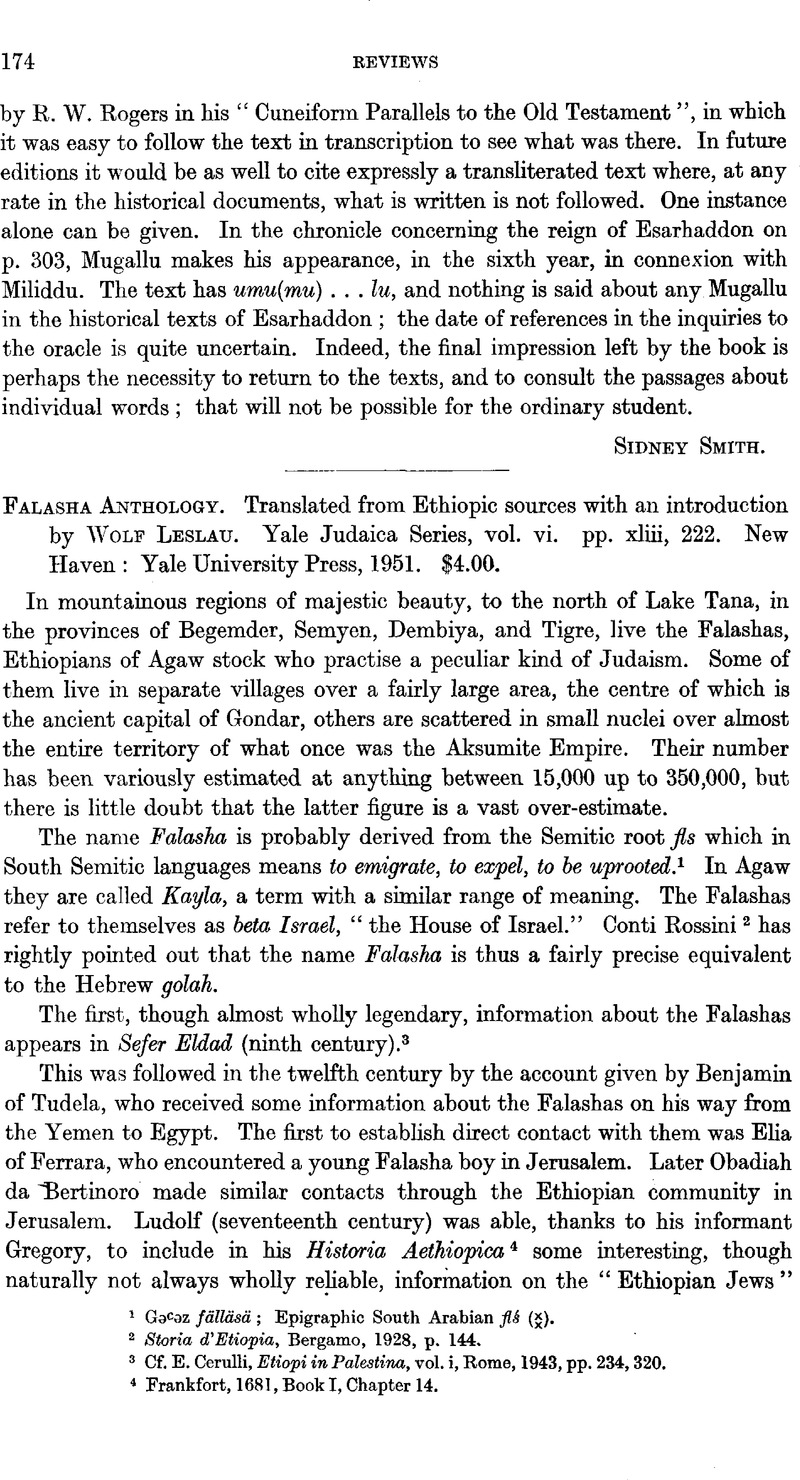Published online by Cambridge University Press: 24 December 2009

page 174 note 1 Gǝcǝz fälläsä; Epigraphic South Arabian flś ![]() .
.
page 174 note 2 Storia d'Etiopia, Bergamo, 1928, p. 144.Google Scholar
page 174 note 3 Cf. Cerulli, E., Etiopi in Palestina, vol. i, Rome, 1943, pp. 234, 320.Google Scholar
page 174 note 4 Frankfort, 1681, Book I, Chapter 14.
page 175 note 1 The “Talmudic dialect” no doubt refers to their Cushitic (Agaw) language which Gregory did not understand.
page 175 note 2 Edinburgh, 1790, vol. i, pp. 483–492.Google Scholar
page 175 note 3 Cf. in particular his “Excursion chez les Falachas en Abyssinie”, in the Bull. Soc. Géogr. de Paris, 1868, ii, pp. 270et seqq.Google Scholar
page 175 note 4 “Appunti di storia e letteratura Falascia,” Riv. Stud. Or., 1920Google Scholar; Rend. Line., 1923, as well as many other smaller studies.Google Scholar
page 175 note 5 Die Juden in Abessinien, Hamburg, 1921Google Scholar. An interesting account of the Falashas, reflecting traditional views as well as some pseudo-scholarly material, is contained in Amharic, 'Aläk'a Tayyä'syä'ityop'ya hǝzb tarik (History of the People of Ethiopia), Asmara, 1927, pp. 30–3.Google Scholar
page 175 note 6 From this verdict the writings of Conti Rossini, Guidi, Rathjens, and some others, must of course be excluded.
page 175 note 7 Tǝ'ǝzǝza Sanbat, Abba Elijah, Book of the Angels, Baruch, Apocalypse of Gorgorios, Testament of Abraham, Death of Moses, Prayers.
page 176 note 1 Recueil de textes falachas, Paris, 1951.Google Scholar
page 176 note 2 Aešcoly's work includes a fairly large number of those rather dreary repetitions of magical names and words. Cf. also Ullendorff, E., Catalogue of Ethiop. MSS. in the Bodleian Library, vol. ii, pp. 22–7.Google Scholar
page 176 note 3 The term “Coptic” Christians is hardly applicable now that the Ethiopian Church has become autocephalous (1951) and virtually independent of the Patriarch in Alexandria.
page 177 note 1 E.g. in his Storia d'Etiopia, p. 144.Google Scholar
page 177 note 2 This possibility is now also mentioned by Aešcoly, in his new book, p. 4.Google Scholar
page 177 note 3 Mathew, Archbishop David, Ethiopia, London, 1947, p. 12Google Scholar. See also Perham, Margery, Government of Ethiopia, London, 1948, p. 29.Google Scholar
page 177 note 4 Recueil, p. 4.Google Scholar